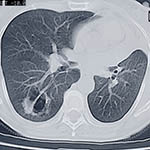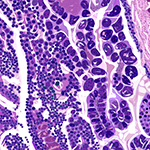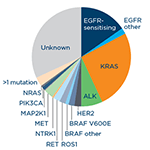Many different tests are used to diagnose lung cancer and determine whether it has spread to other parts of the body. Some can also help to decide which treatments might work best.
The steps and tests used in diagnosing lung cancer include medical history, imaging testsAny test that uses a form of energy, such as X-rays, ultrasounds, radio waves, or radioactive substances, to make detailed pictures of areas inside the body, laboratory tests, biopsiesThe removal of cells or tissues for examination by a pathologist, and biomarker tests.
Only a biopsy can provide a definite diagnosis of lung cancer, so, until biopsy results come back, a person does not know for sure whether he or she has lung cancer. Many other diseases, including other types of cancer, can cause masses to form in the lung. Imaging tests can be used to find out where the possible cancer is and whether it has spread, but they can never be used alone to make a diagnosis.
In this section you will find more information about different steps and tests for making a lung cancer diagnosis.
 Medical History
Medical History
If a patient has signs or symptoms that may be due to lung cancer, the doctor will examine the patient and take a medical history to check for risk factors and learn more about the symptoms. Read more »
 Imaging Tests
Imaging Tests
Imaging tests are the next step in figuring out whether a person has lung cancer. Imaging tests create pictures of the inside of the body by using X-rays, magnetic fields, sound waves, or radioactive particles. Read more »
 Laboratory Tests
Laboratory Tests
Doctors may also order one or more kinds of laboratory tests to help determine if a person has lung cancer. Read more »
 Biopsies
Biopsies
There are many different ways doctors can obtain tissue to find out if a person has lung cancer and, if so, which type of lung cancer. Read more »
 Biomarker Testing
Biomarker Testing
Biomarker tests may provide information about a mutation, or change, in the cells that became cancer; there may be an available treatment that targets this change. Read more »
